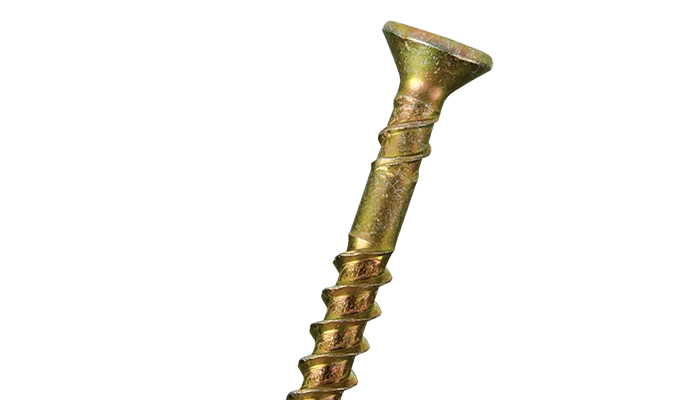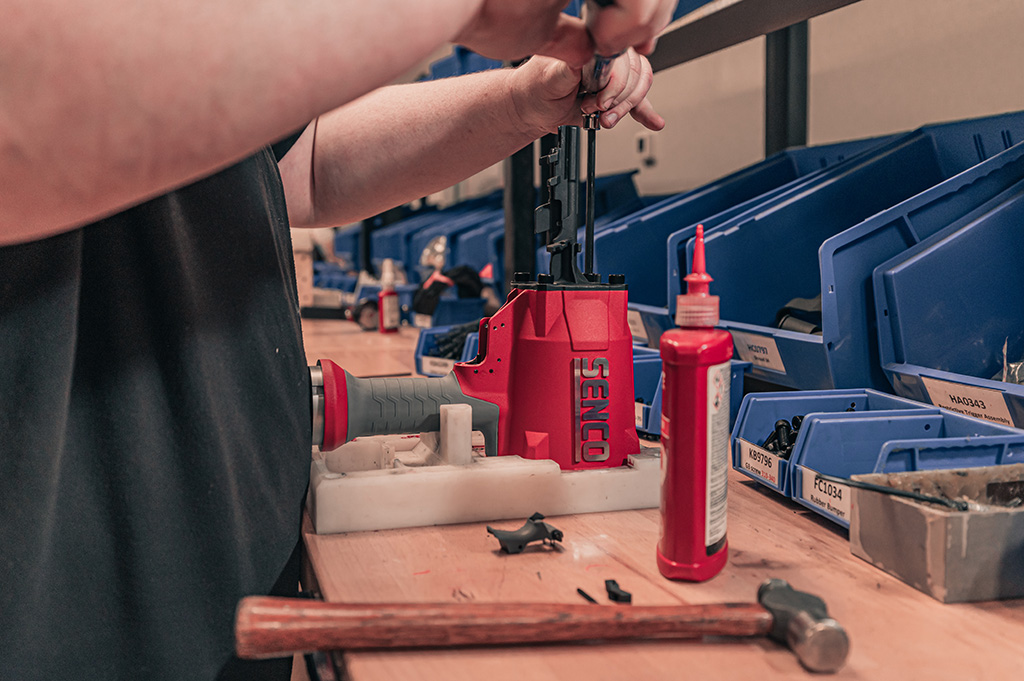Anatomy of a screw

It’s easy to overlook the complexity of screws. These ever-present fasteners seem simple, but they include several unique parts that make them the right (or wrong) screw for your job.
The three basic parts of a screw are the head, threaded shank and point. There are different types of each, so it’s important to know what works best for your particular job. Read on to learn how to make the right choice for your work.
Heads up
There are two basic types of screws: counter sinking and non-counter sinking. The difference is where the head sits once the screw has been driven. Counter sinking screws are designed so the top of the screw head sits flush with or below the material being fastened, such as drywall or decking. The heads of non-counter sinking screws, on the other hand, rest above the material. These are most commonly used in metal fastening projects.
The head of each screw features a drive style, such as slotted, Phillips or square. These terms describe the shape of the recessed area in the top of each screw head. There are also proprietary options on the market, such as SENCO’s exclusive Rex, that offer added benefits.
When choosing a drive style, consider the speed with which you’ll insert the screw, torque requirements and overall size.
- Phillips is ideal for drywall screws and other high-speed, low-torque applications.
- Square is typically used for high-torque applications.
- Rex combines the best of multiple drive styles. Designed for heavier applications, it increases the surface area available for driving the screw, and that in turn boosts the torque transmission capability.
SENCO offers #2 Phillips, #2 square and its exclusive Rex drive style.
From head to thread
The threaded shank is the heart of the screw. Three measurements determine the size of each screw, and you should consider all three before starting a job:
- Shank diameter: This is represented by the diameter of the thread – the higher the number, the larger the diameter. The size of the shank will help you determine which screw has the ideal strength for your specific job. SENCO sells #6, #7, #8, #9, #10 and #12 shank diameter screws.
- Threads per inch: Often abbreviated as TPI, this is simply the number of threads found in an inch of screw length. Low TPI numbers like 7 or 8 represent coarse screws for wood, and high numbers like 18 or 22 represent fine thread screws for metal fastening.
- Length: A screw’s length is measured differently depending on whether it is a counter sinking or non-counter sinking screw. Counter sinking screws are measured from the top of the head to the tip of the point. By contrast, non-counter sinking screws are measured from just under the head, which rests above the material being fastened, to the top of the point. By measuring the non-counter sinking screws this way, the length indicates how far the screw enters into the material.
These sets of measurements – shank diameter, threads per inch and length – determine a screw’s designation for sale. For example, a SENCO screw listed as #10-16 x ¾” means a screw with a #10 shank that is 16 threads per inch and ¾” in length. Coarse thread screws, such as drywall screws, typically leave out the threads per inch. On those, you’ll see measurements like #6 x 1¼” instead.
To the point
While there are many types of screw points from which to choose, the two most common are self-piercing and self-drilling. Self-piercing points, such as sharp points, are designed to cut through the material as the screw threads. Self-drilling points, or drill points, have a drilling feature at the tip of the screw that is used to bore a hole through the metal before the threads engage to fasten the pieces together.
Consider the coating
Beyond the three main parts of a screw, there is another element to consider: the type of coating used. Coatings offer varying levels of protection against corrosion. SENCO’s coatings, sorted by lowest to highest protection, are gray phosphate, clear zinc, yellow zinc, the exclusive E1000, Exterior Finish and stainless steel.
The result of extensive engineering, SENCO’s exclusive E1000 coating was originally designed specifically for cargo trailers and provides the look of a clear zinc coating with exterior grade protection against weather.
SENCO manufactures screws to handle any job you’re tackling, and choosing the proper ones will ensure your project lasts for years and years. Find your local SENCO dealer at https://www.senco.com/find-a-dealer/.

